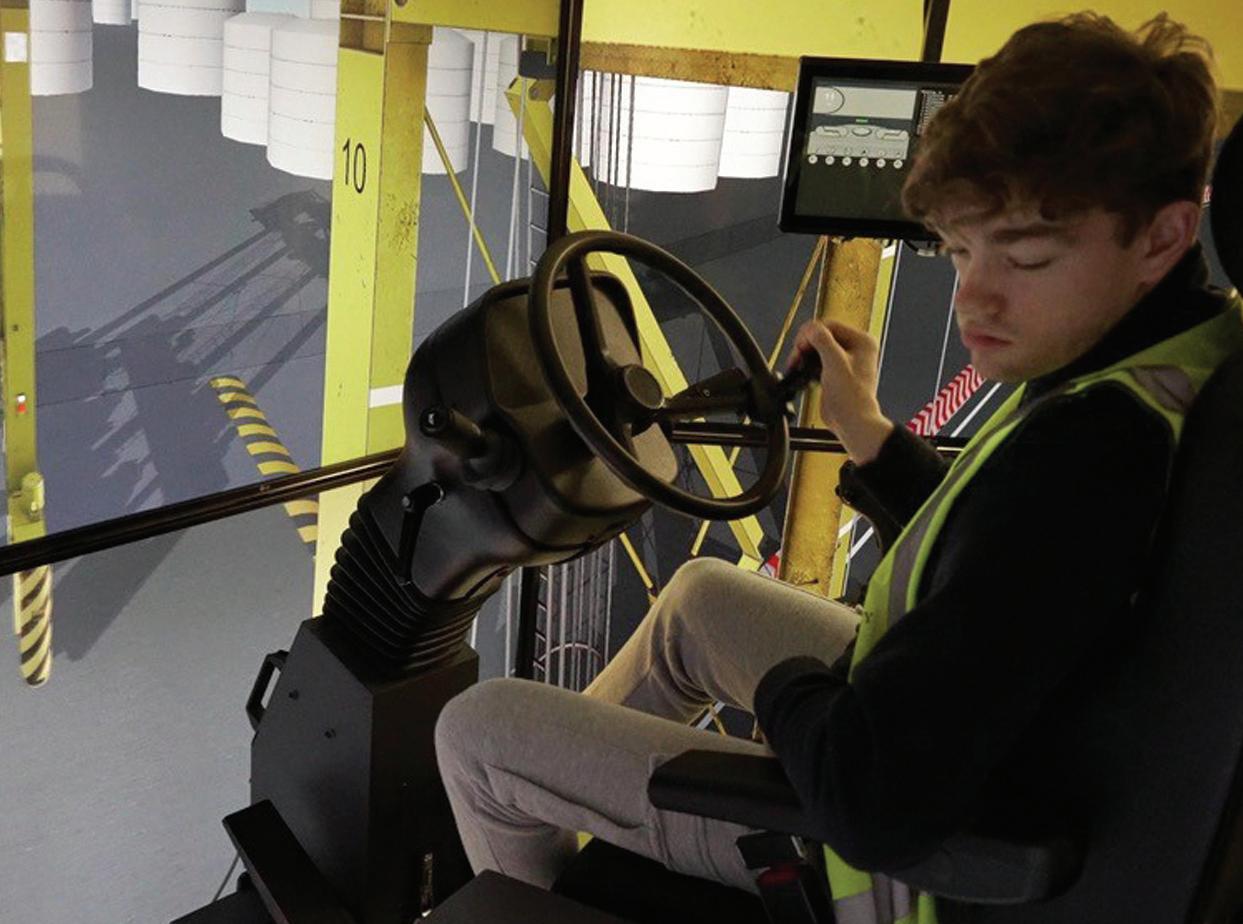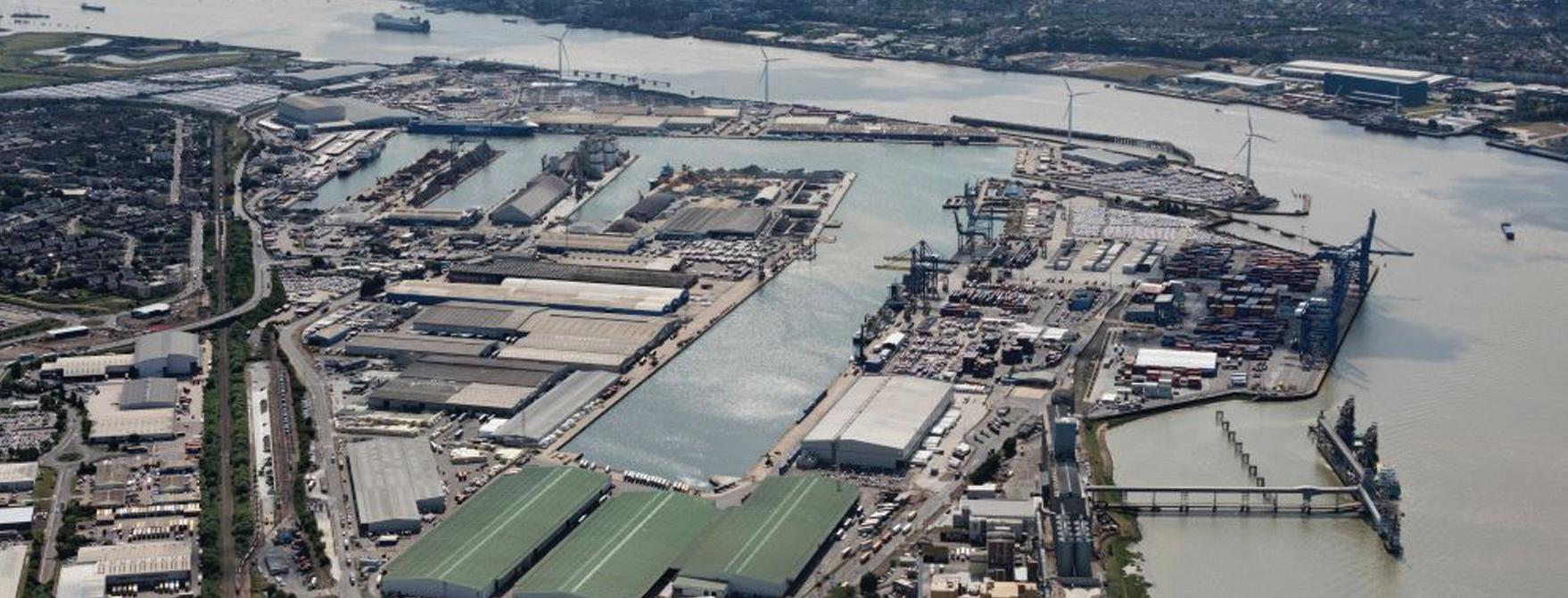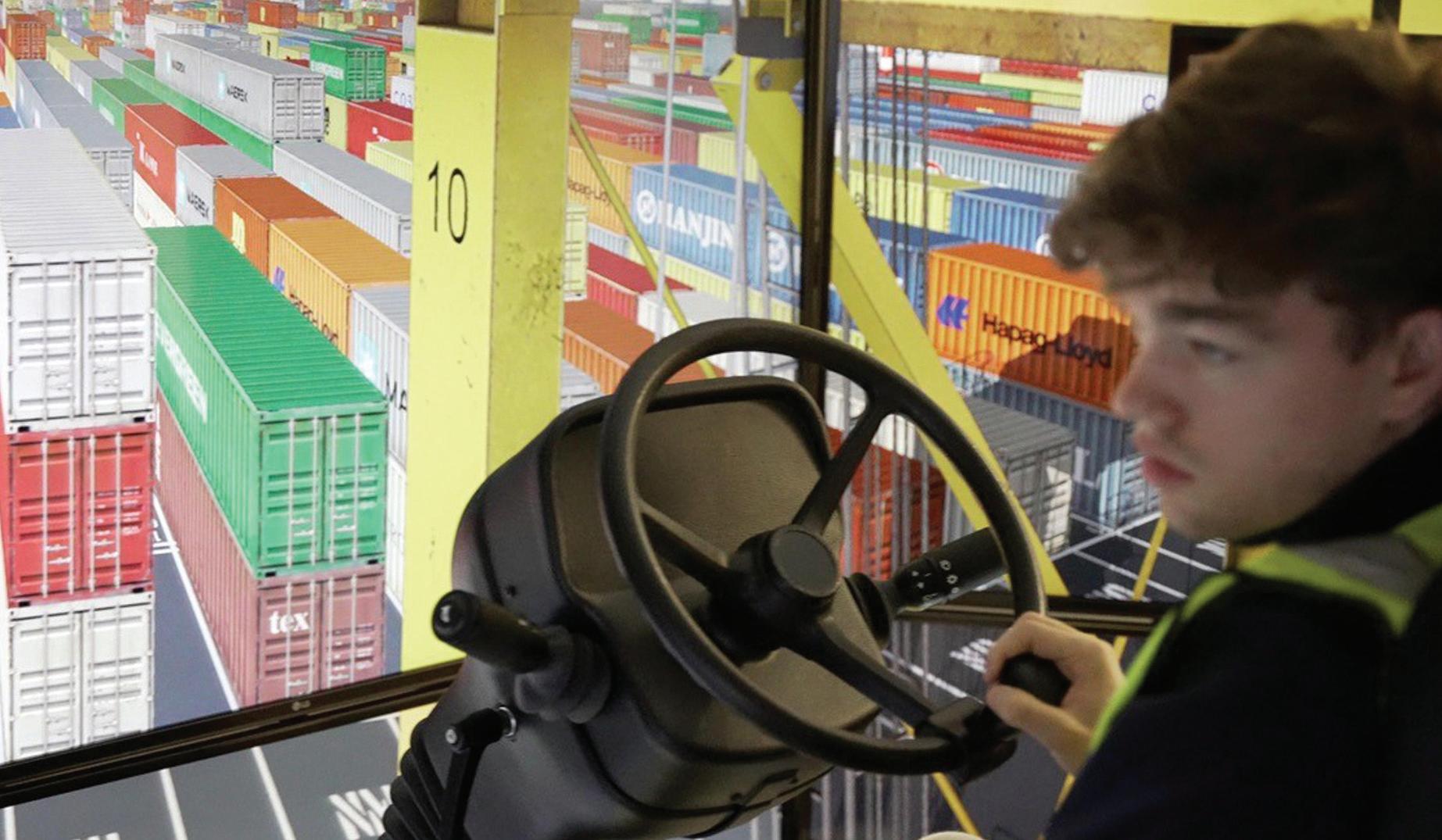
5 minute read
Performance
LEADING THE CHARGE IN DIGITALISATION
The pandemic and modern challenges have rapidly increased the embrace of digital adoption in every industry and ports are no different
ST Engineering Antycip, an award-winning UK-based simulation specialist, has been supporting ports in implementing modernised technology to increase efficiency and support skill development of workers.
“Over the last several years, ports across the UK have begun to digitise in order to help overcome today's challenges,” said Amir Khosh, ST Engineering Antycip's business development manager. “New technologies and training tools are proving invaluable to the progression of the industry.”
DIGITAL TRANSFORMATION
The largest port on London's the river Thames, the Port of Tilbury, underwent a digital transformation in 2018 with the integration of a training simulator for new workers. Owned by Forth Ports, the Tilbury site is in a premier position in the south of England for timely short haul rail distribution and is within 120 miles of 70% of the UK's population, making the port a vital link in the distribution of goods in the UK.
As a key player in the UK port market, Tilbury is known for its award-winning Logistics Training Academy, which offers a range of training and educational programmes to benefit the surrounding communities. Forth Ports chose to integrate a 13 screen Vortex simulator designed to support training and education efforts.
ST Engineering Antycip supported CM Labs who provided Tilbury with the simulation platform.
“The UK is now in a very different place to where it was five years ago, due to Covid and to a degree, due to Brexit,” said Stuart Wallace, chief operating officer for Forth Ports.
“Our short-term investments, like the simulator, need to support training and skillset initiatives so our long-term investments, like straddle carriers and ship-to-shore gantry cranes, benefit from experienced, developed workers.”
The simulator enables the company to not only teach with state-of-the-art technology, but also analyse the data of trainees to establish how their learning is going, thanks to the instructor operating station, which analyses the trainees' progress.
“Gone are the days where you could readily get acceptance to put a trainee on equipment to train on shipping vessels, now it's all about efficiency,” said Mr Wallace. “We strive to be quicker and better all the time, so using equipment for training when an experienced worker could be using it slows down the efficiency and productivity of the port, which is where the simulator comes in.”
With trainees being able to learn while the port is still running at a high productivity, the simulator has proven to be an asset. It can be used 24/7, in all weathers, so there is never a delay on the learning process. And it removes health and safety risks at
8 The simulator
allows the port to train candidates behind a window or in a separate room

Photo: Port of Tilbury 8 The simulator has
proven to be an asset for the port

Photo: Port of Tilbury
the port for those training. “There's evidence to suggest that the trainees who learn via the simulator make fewer mistakes compared to those who go straight to the equipment,” said Simon Harper, Forth Port's learning and development manager at Tilbury.
“We suspect it's because trainees on the simulator can make errors without consequences, which leads to a more productive learning environment.”
COVID SECURE
The pandemic challenged ports to somehow create Covidsecure requirements while meeting the needs of efficiency and the ongoing demands of shipping. Tilbury managed this with the assistance of its simulator.
“With the simulator, we could continue to train candidates behind a window or in a separate room and monitor progress without direct face-to-face interaction,” said Mr Harper. “It enabled us to continue with plant and equipment training in a Covid-secure way.”
Tilbury was able to continue with its recruitment programmes and training regime thanks to the simulator. During the UK's most recent lockdown, Tilbury was able to recruit 15 new staddle carrier drivers.
“Training in the ports sector has hit a deficit over the last few years,” said Elena Shalabanova, product manager for CM Labs. “We've seen a decline in apprenticeship programmes globally despite a need for skilled workers fluent with new technologies. Simulators work to completely overcome those obstacles.”
CM Labs reference a study complete in 2016, in which an STS worker was analysed for their productivity. After simulation training, the productivity of the worker improved by over 15%. The increase in productivity translates into the incremental value of £41,796 per STS worker in the first 15 shifts after training.
“Evidence is pouring in that this is the way forward towards progress,” commented Mr Khosh.
“Simulation offers initial candidate screening prior to training, and also means that new operators are productive on job from the first day.”
EMBRACING CHANGE
Although the simulator has proven popular, Mr Harper admits that the workforce took time to adjust to the change. “We have to remember that this is a very traditional industry, who aren't used to rapid technological change, so it took some time for the workforce to get used to the idea of the simulator. But now our workers really see the benefit from it.”
For the future, Mr Harper envisions that the technological advancement trend will keep going.
“Automation is the way ports are going, but people will always be at the hearts of port infrastructure. It's always good old human power that provides a solution to problems that may arise, and I think that unity of technology and people will continue.”
CM Labs believes that technology will progress to support ports with demand and possibly even predict demand before it happens. “Port 3.0, as we call it, is where we are currently. In the coming years rapidly digitalised processes for ports will enable an ultra-efficient space with the combination of workers and technology,” comments Ms Shalabanova.
“Automation and digitalisation have been one of maritime's biggest technological trends,” says Mr Khosh.
“It has inspired innovation, as ports search for more ways to carry more cargo and meet demand, which has only been growing year on year. Ultimately, we foresee a future of fully digitised ports utilising a range of technologies, from simulation to AI, with people providing the backbone.”
8 After simulation
training, productivity has been found to improve by over 15%
While the simulation is its latest venture, Tilbury has continued to expand the digitalisation and modernisation, of its site. Workers benefit from technological installations on the plant and warehouse equipment which is continually upgraded and supports workers in their roles

8 Amir Khosh, ST
Engineering Antycip's business development manager
Photo: ST Engineering Antycip










